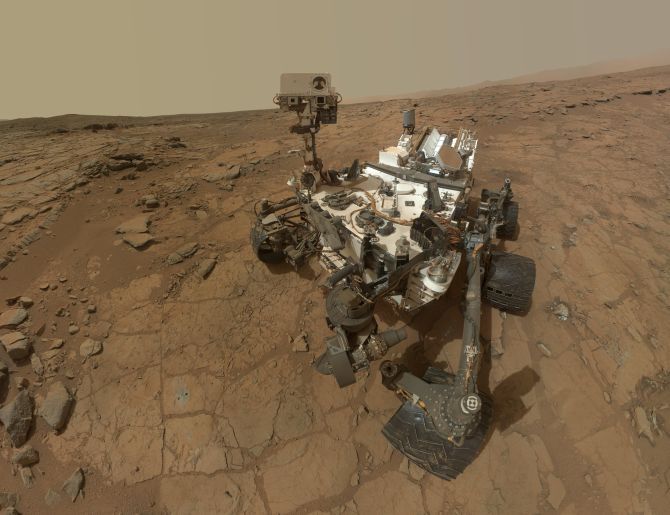 | « Back to article | Print this article |
 The National Aeronautics and Space Administration's rover Curiosity has detected the first traces of nitrogen on the surface of Mars, a discovery that adds to the evidence that the red planet could have once supported life.
The National Aeronautics and Space Administration's rover Curiosity has detected the first traces of nitrogen on the surface of Mars, a discovery that adds to the evidence that the red planet could have once supported life.
A team using the Sample Analysis at Mars instrument suite aboard NASA's Curiosity rover made the first detection of nitrogen on the surface of Mars from release during heating of Martian sediments.
The nitrogen was detected in the form of nitric oxide, and could be released from breakdown of nitrates during heating.
"Nitrates are a class of molecules that contain nitrogen in a form that can be used by living organisms. The discovery adds to the evidence that ancient Mars was habitable for life," NASA said in a statement.
Nitrogen is essential for all known forms of life, since it is used in the building blocks of larger molecules like DNA and RNA, which encode the genetic instructions for life, and proteins, which are used to build structures like hair.
Researchers believe the nitrates are ancient, and likely came from non-biological processes like meteorite impacts and lightning in Mars' distant past.
"Finding a biochemically accessible form of nitrogen is more support for the ancient Martian environment at Gale Crater being habitable," said Jennifer Stern of NASA's Goddard Space Flight Center in Greenbelt, Maryland.
The team found evidence for nitrates in scooped samples of windblown sand and dust at the "Rocknest" site, and in samples drilled from mudstone at the "John Klein" and "Cumberland" drill sites in Yellowknife Bay.
Since the Rocknest sample is a combination of dust blown in from distant regions on Mars and more locally sourced materials, the nitrates are likely to be widespread across Mars, according to Stern.
The results support the equivalent of up to 1,100 parts per million nitrates in the Martian soil from the drill sites.
The samples were first heated to release molecules bound to the Martian soil, then portions of the gases released were diverted to the SAM instruments for analysis.
Various nitrogen-bearing compounds were identified with two instruments: a mass spectrometer and a gas chromatograph.
Along with other nitrogen compounds, the instruments detected nitric oxide (NO - one atom of nitrogen bound to an oxygen atom) in samples from all three sites.
Since nitrate is a nitrogen atom bound to three oxygen atoms, the team believes most of the NO came from nitrate which decomposed as the samples were heated for analysis.
Certain compounds in the SAM instrument can also release nitrogen as samples are heated; however, the amount of NO found is more than twice what could be produced by SAM in the most extreme and unrealistic scenario, according to Stern.
This leads the team to think that nitrates really are present on Mars, and the abundance estimates reported have been adjusted to reflect this potential additional source, said Stern.
Image: A self-portrait of NASA's Mars rover Curiosity taken by the rover's Mars Hand Lens Imager. Photograph: NASA/JPL-Caltech/MSSS